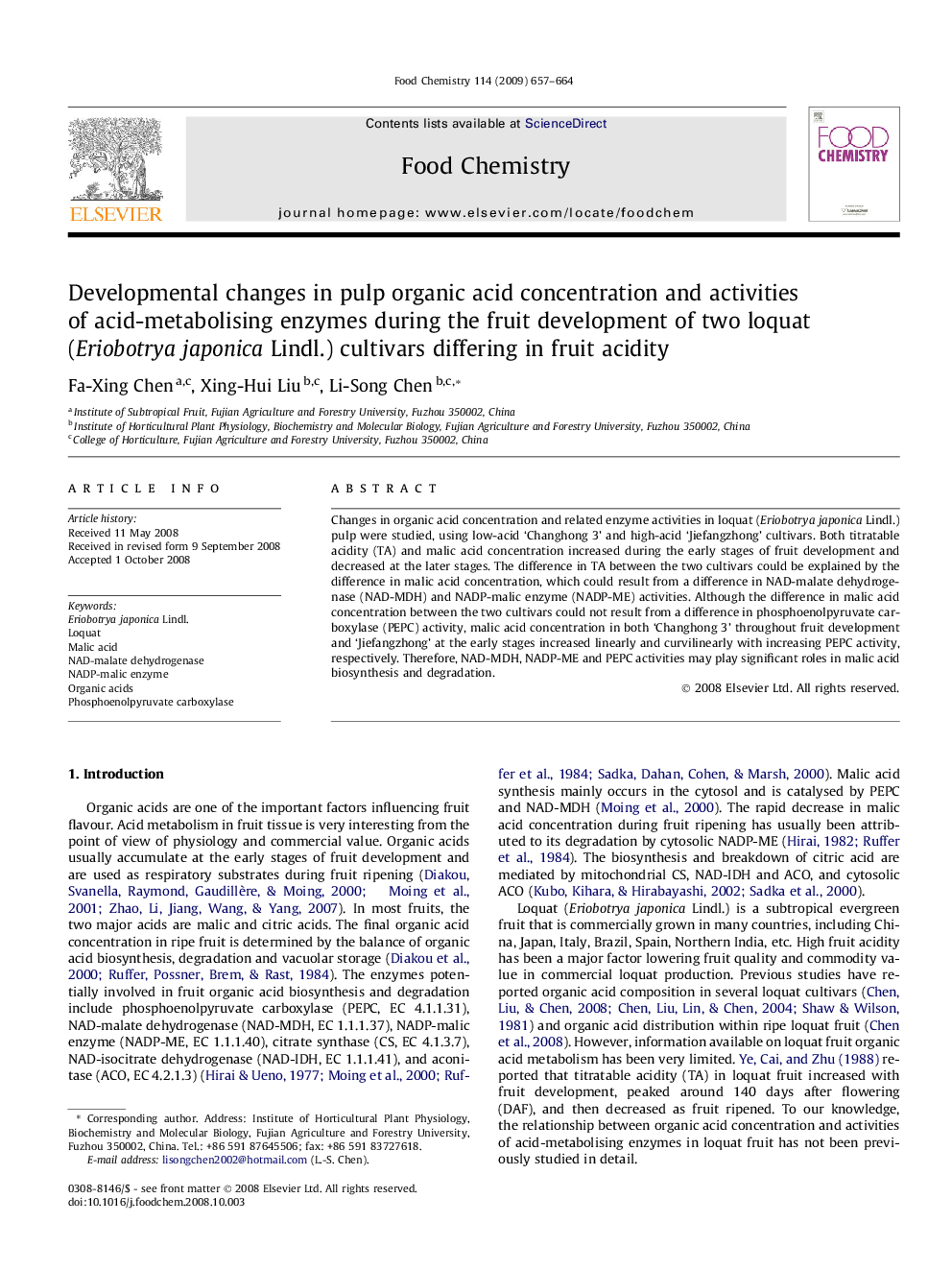| Article ID | Journal | Published Year | Pages | File Type |
|---|---|---|---|---|
| 1187596 | Food Chemistry | 2009 | 8 Pages |
Changes in organic acid concentration and related enzyme activities in loquat (Eriobotrya japonica Lindl.) pulp were studied, using low-acid ‘Changhong 3’ and high-acid ‘Jiefangzhong’ cultivars. Both titratable acidity (TA) and malic acid concentration increased during the early stages of fruit development and decreased at the later stages. The difference in TA between the two cultivars could be explained by the difference in malic acid concentration, which could result from a difference in NAD-malate dehydrogenase (NAD-MDH) and NADP-malic enzyme (NADP-ME) activities. Although the difference in malic acid concentration between the two cultivars could not result from a difference in phosphoenolpyruvate carboxylase (PEPC) activity, malic acid concentration in both ‘Changhong 3’ throughout fruit development and ‘Jiefangzhong’ at the early stages increased linearly and curvilinearly with increasing PEPC activity, respectively. Therefore, NAD-MDH, NADP-ME and PEPC activities may play significant roles in malic acid biosynthesis and degradation.
